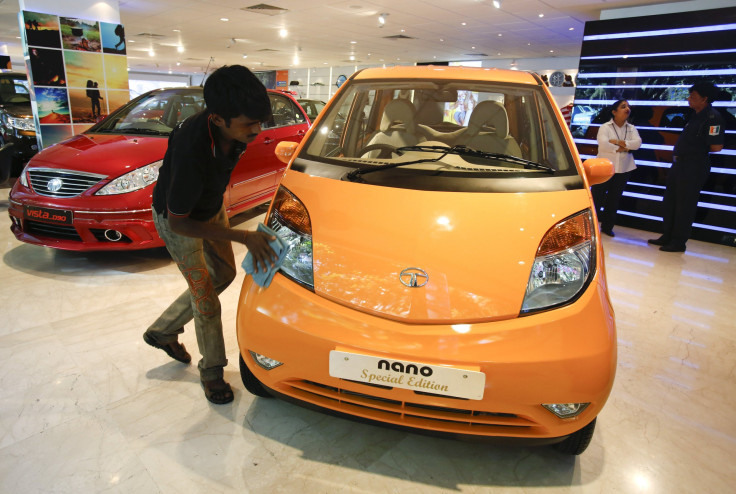Tata Motors' Q4 2013: Company’s Auto Sales, Production Figures Show Just How Much Country’s Economy Has Decelerated

Tata Motors Ltd. (NYSE:TTM), India’s largest auto company, managed to beat first-quarter estimates but did so no thanks to steep losses back home. The positive earnings are largely due to a nearly 19 percent sales boost from its Jaguar Land Rover Ltd. luxury unit, fueled largely by demand abroad.
Fourth quarter net income plummeted 37 percent to $703 million, but the company fared better than the $475 million analysts polled by Bloomberg had expected. But the good news for Tata comes largely from operations abroad. The company’s Warwick, U.K.-based Jaguar Land Rover luxury unit reported net profit of $570 million, which both beat expectations and shows just how much Tata is relying on the demand for global luxury cars to offset steep declines back home.
Consider these two bits from the Mumbai-based company’s Indian-esque quarterly earnings statement, in which cash is measured in crores and six-figure numbers have commas after the first digit.
• Passenger cars and utility vehicle sales in the fourth quarter ended March 31, 2012: 112,470
• Passenger cars and utility vehicle sales in the same quarter of 2013: 39,428
That’s a 65 percent decline in national non-commercial auto sales. Now, consider this data:
• Passenger cars and utility vehicle production in the fourth quarter ended March 31, 2012: 98,664
• Passenger cars and utility vehicle sales in the same quarter of 2013: 32,015
That’s a 68 percent plunge in productivity.
Tata Motors commands about 9 percent of the Indian market for passenger vehicles. It produces several models that are largely for the domestic market, including the Xenon pickup truck, the Sumo Grande family minivan and the Safari SUV.
Clearly India’s economic growth is having an effect on auto sales. On Wednesday the Organization for Economic Co-operation and Development (OECD) lowered India’s 2013 expected GDP growth to 5.3 percent from the 5.9 percent figure it floated in November.
According to economists polled by Reuters, the country’s GDP growth probably expanded by 4.8 percent from a near-four-year low in the fourth quarter of 2012. The trend is positive, but the country’s economy will have to pick up the pace for the remainder of the year to meet the OECD’s latest forecast. National non-commercial auto sales serve as an important metric for measuring consumer sentiment. And if Tata’s latest numbers are anything to go by -– this sentiment has been grim.
© Copyright IBTimes 2024. All rights reserved.












